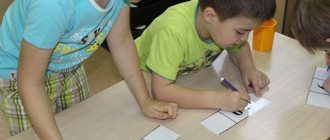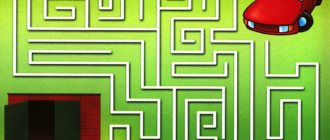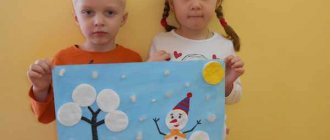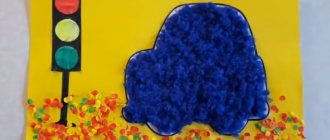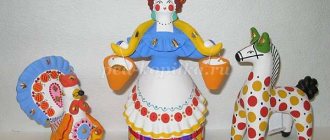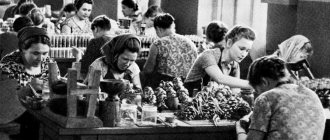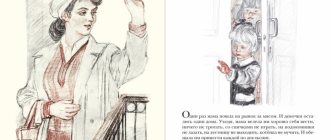Development of critical thinking in a child
Why
The game is suitable for any conditions. She will teach the child to think and analyze. You can even play it on the way to kindergarten or school. The child needs to constantly ask questions that do not contain an answer. It is important that in the process of reasoning the baby learns to analyze and look for a cause-and-effect relationship. For example, “why shouldn’t you jump into a puddle?”, “why is yelling at your parents bad?” etc.
Make up the end
The game will perfectly help your child develop not only critical thinking, but also imagination. So, you need to read a fairy tale or story with your children. At the most unpredictable moment, you need to stop and ask the child to figure out the ending of the story. After this, you can compare the endings of the child and the author, finding the pros and cons of both options.
If... then...
This entertainment is great for teaching kids how to find cause-and-effect relationships. The presenter says a few phrases that will let the participants understand the essence. For example, if it rains tomorrow, you need to take an umbrella with you, or if you miss school tomorrow, you will fall behind in several subjects. Then the presenter says only the first part of the expression, and the players continue.
Debate
Players must be divided into 2 teams. After which the presenter offers to choose one of the proposed topics or actions. One team should say the pros, and the second - the cons. The game perfectly helps you learn to compare facts, think critically, and develop a competitive spirit.
Persuasion
Which, no matter how much evidence proves the opposite, teaches a child to insist on his own and find irrefutable evidence. So, in this game, you will have to tell the child, for example, that it only seems to him that the grass is green. It's actually purple. The child, naturally, will not agree and will try to explain to you why the grass is green.
Gaming memory development
What's missing?
You need to lay out several images on the table. The child looks at them, and the presenter tells a story about each image, after which the player turns away. During this time, the presenter must remove one photo. After which the child must not only understand which image has disappeared, but also tell what it meant.
I'll name everything
The guys sit in a circle. Together they choose a common topic. After which the first participant says a word. The second player must say the first word of the first participant and his new one. So each child must supplement the chain of words with his own. The main thing is not to lose your way.
Route
The player is blindfolded. The leader leads him along the intended route, telling him how many steps and where to go. At the end of the route, the participant is untied and turned around. His task is to do all the steps exactly the opposite and find the “start” point.
Toy queue
The presenter lines up 5-6 toys one after another, explaining who is behind whom. After which the presenter says that the toys needed to go to their owners, and when they returned, they could not restore the line one after another. We need to help them and line them up correctly one after another.
What's on the tray?
The presenter puts 5-10 small things on the tray. For one minute, the participant looks at the tray and remembers what is on it. After this, the presenter covers it with a towel or other rag, and the participant’s task is to remember all the things that are on it.
Attention competitions for children
My color
Each player receives a pre-prepared card. All cards must be different colors. At the command of the leader, the children must line up in a minute from the lightest to the darkest card. The game perfectly trains children's attentiveness and concentration on details.
Animal Partner
An even number of players is required. In advance, the presenter prepares paired cards with images of animals. Participants get to know their animal. After this the light turns off. Players must find their match based on the sounds made. You can't speak human language. You just need to make sounds characteristic of those made by the animal shown in the picture.
Details in a circle
Children sit in a circle. The first participant names any large word, for example, house or city. The neighbor on the right must name a clarifying detail, for example, a house with windows or a city with a park. Each time, the neighbor on the right must name an increasingly smaller clarifying detail. The game perfectly develops logic and attention to detail.
Do it the other way around
The game is suitable for those who already know how to write. The presenter defines 2 commands, for example, “word” and “line”. When the presenter says “word”, you need to draw a line, and when he says “line”, you need to write a table. It is important to concentrate and not get confused in tasks. And to simplify the task for the presenter, we recommend that he give a hint in the form of “LLLSLSLSLSLLLSLL”.
Unravel us
A leader is chosen for the game. The rest of the participants join hands. The presenter will have to leave the room. The rest begin to walk in different directions, thereby becoming confused. The main thing is not to let go of each other’s hands. The task of the presenter, when he returns, is to unravel the “confusion” of his friends. The game trains memory, attentiveness, logic and thinking in children.
